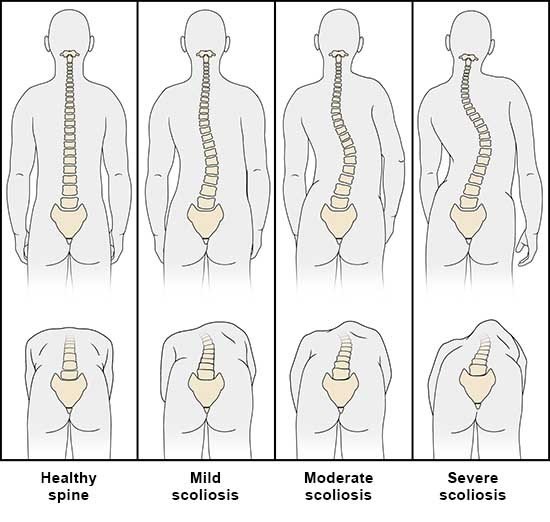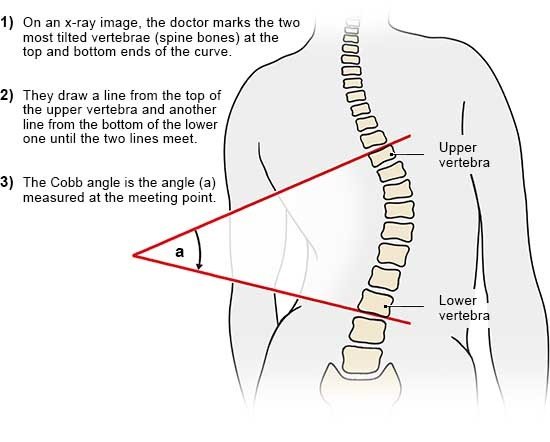Altaf F, Gibson A, Dannawi Z et al. Adolescent idiopathic scoliosis. BMJ 2013; 346: f2508.
Ceballos-Laita L, Carrasco-Uribarren A, Cabanillas-Barea S et al. The effectiveness of Schroth method in Cobb angle, quality of life and trunk rotation angle in adolescent idiopathic scoliosis: a systematic review and meta-analysis. Eur J Phys Rehabil Med 2023; 59(2): 228-236.
Deutsche Wirbelsäulengesellschaft (DWG), Vereinigung für Kinderorthopädie (VKO), Deutsche Gesellschaft für Orthopädie und Unfallchirurgie (DGOU). Adoleszente Idiopathische Skoliose (S2k-Leitlinie). AWMF-Registernr.: 151-002. 2023.
Di Felice F, Zaina F, Donzelli S et al. The Natural History of Idiopathic Scoliosis During Growth: A Meta-Analysis. Am J Phys Med Rehabil 2018; 97(5): 346-356.
Dunn J, Henrikson NB, Morrison CC et al. Screening for Adolescent Idiopathic Scoliosis: A Systematic Evidence Review for the U.S. Preventive Services Task Force (AHRQ Evidence Syntheses; No. 156). 2018.
Gamiz-Bermudez F, Obrero-Gaitan E, Zagalaz-Anula N et al. Corrective exercise-based therapy for adolescent idiopathic scoliosis: Systematic review and meta-analysis. Clin Rehabil 2022; 36(5): 597-608.
Hresko MT. Clinical practice. Idiopathic scoliosis in adolescents. N Engl J Med 2013; 368(9): 834-841.
Negrini S, Donzelli S, Aulisa AG et al. 2016 SOSORT guidelines: orthopaedic and rehabilitation treatment of idiopathic scoliosis during growth. Scoliosis Spinal Disord 2018; 13: 3.
Niethard FU, Pfeil J, Biberthaler P. Duale Reihe Orthopädie und Unfallchirurgie. Stuttgart: Thieme; 2014.
Théroux J, Stomski N, Hodgetts CJ et al. Prevalence of low back pain in adolescents with idiopathic scoliosis: a systematic review. Chiropr Man Therap 2017; 25: 10.
Trobisch P, Suess O, Schwab F. Idiopathic scoliosis. Dtsch Arztebl Int 2010; 107(49): 875-883; quiz 884.
IQWiG health information is written with the aim of helping people understand the advantages and disadvantages of the main treatment options and health care services.
Because IQWiG is a German institute, some of the information provided here is specific to the German health care system. The suitability of any of the described options in an individual case can be determined by talking to a doctor. informedhealth.org can provide support for talks with doctors and other medical professionals, but cannot replace them. We do not offer individual consultations.
Our information is based on the results of good-quality studies. It is written by a team of health care professionals, scientists and editors, and reviewed by external experts. You can find a detailed description of how our health information is produced and updated in our methods.



